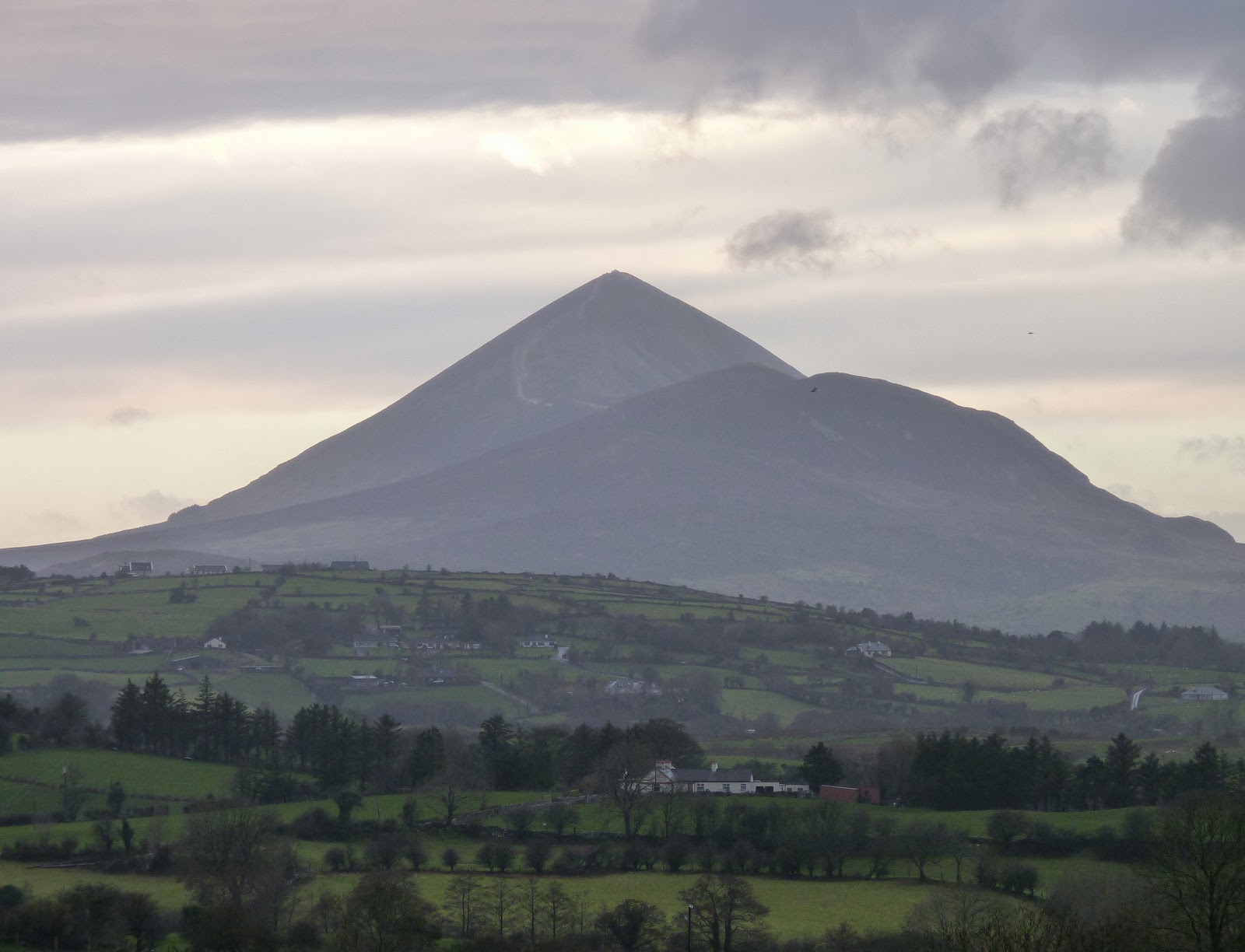T and I set out early in the New Year and drove to Enniskillen and Sligo. There we ascended to Queen Maeve's Cairn with its expansive views from Benbulben to the Ox Mountains and then headed on to Ballina. We paused at Downpatrick Head with its sea stacks and at Ceide Fields before traversing the great expanse of peat moorland that stretches all the way to Achill Island.
We arrived at the Mulranny Park Hotel and were given the bridal suite, complete with four poster bed and bay window overlooking Clew Bay to Croagh Patrick. After a sauna and a wonderful meal in the Nephin restaurant, we were definitely on honeymoon.
The hotel was built 100 years ago to accomodate tourists on the Westport to Achill line. The railway closed in the 1930's and was recently turned into a Greenway for walkers and cyclists. The first day we did a long moorland walk under the Nephin Beg Mountains before returning for our regulation sauna and grand evening meal.
After an enormous storm throughout the night, I went for a hillwalk whilst T explored the Greenway. The so-called pilgrims route up Croagh Patrick from Murrisk starts out steep, levels off briefly at 1500 feet, then gets steeper. The top of the mountain was plastered with fresh snow but many hardy pilgrims in trainers, hoodies and a trusty staves made it to the summit. Freed from sin, we trudged down with lighter loads.
Our last day was stormy, we drove through the brooding Dhulough Pass (Ireland's Glencoe) to Killary Harbour: which Churchill wanted to use for submarines during the Second World War and offered Northern Ireland in payment for, but De Valera refused the deal.
We drove back via Aghagower, the site of a monastery and bishopric from the 5th Century. What remains are ruins and the stub of a round tower, a few houses and a pub with a grocers. St Patrick would have set out from here on the last stage of his reputed pilgrimage to Croagh Patrick, some eight miles due West. The modern pilgrims route follows a quite different path. As do modern pilgrims.




No comments:
Post a Comment